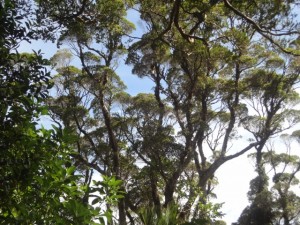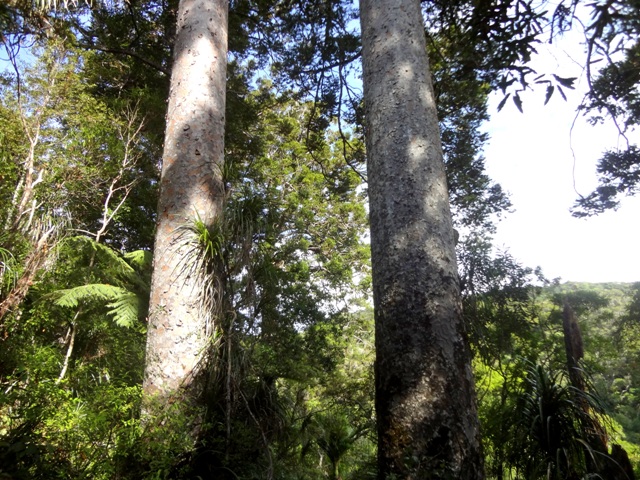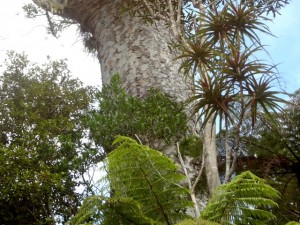 Yesterday (Saturday 3 March) went for a walk in the Waitakeres. After much looking at maps and arguing, we decided we would take the car up to Piha Road, and walk down the Lucy Cranwell Track and back up Kauri Grove Track, both tracks we had not done before. It is constantly amazing that there are still so many tracks that we have not done or have forgotten we’ve done, but afterall there are 270 kilometres of tracks in the Waitakere Ranges Regional Parkland, so it is not surprising. When we were kids we always did the same tracks, Kitekite Falls, Piha Valley, Whites Beach, but there are dozens more tracks to be explored.
Yesterday (Saturday 3 March) went for a walk in the Waitakeres. After much looking at maps and arguing, we decided we would take the car up to Piha Road, and walk down the Lucy Cranwell Track and back up Kauri Grove Track, both tracks we had not done before. It is constantly amazing that there are still so many tracks that we have not done or have forgotten we’ve done, but afterall there are 270 kilometres of tracks in the Waitakere Ranges Regional Parkland, so it is not surprising. When we were kids we always did the same tracks, Kitekite Falls, Piha Valley, Whites Beach, but there are dozens more tracks to be explored.
After leaving the car we set off down hill to the junction with Lucy Cranwell, the idea we would go down this steep track and come back up the Kauri Grove Track. We like loops!
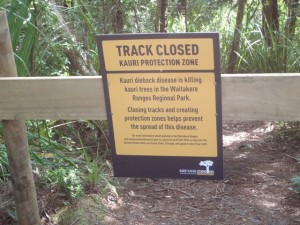 First of all we scrubbed and sprayed our boots to disinfect them because of kauri dieback. However, after a short walk we came across the entrance to Lucy Cranwell barred and a sign saying the track was closed because of kauri dieback. It would have been very easy to go past, as there was little obstruction, but we behaved ourselves. I did wonder why there wasn’t a sign at the carpark saying which tracks were closed and which open. After a good deal of argument about which new route we would take – with 3 of us that took quite a long time – and as some of us had left our reading glasses behind we were somewhat dependent on the advice from our one visually competent friend.
First of all we scrubbed and sprayed our boots to disinfect them because of kauri dieback. However, after a short walk we came across the entrance to Lucy Cranwell barred and a sign saying the track was closed because of kauri dieback. It would have been very easy to go past, as there was little obstruction, but we behaved ourselves. I did wonder why there wasn’t a sign at the carpark saying which tracks were closed and which open. After a good deal of argument about which new route we would take – with 3 of us that took quite a long time – and as some of us had left our reading glasses behind we were somewhat dependent on the advice from our one visually competent friend.
OK, we thought now we’ll do the Kauri Grove Track to above the falls, then back up the Winstone Track which emerges on Piha Road.
My God, the Kauri Grove Track is a wonder. It skirts around the head of the Glen Esk Valley, with a long gradual descent to above the Kitekite Falls.
The forest is huge and ancient. The kauri trees are immense, as big as those at Cascade Kauri. We concluded that this upper valley must never have been milled, as the rimu and kauri were immensely tall and majestic. The growth around contains much kiekie which likes growing in the soil soured by the kauri.
It was very troubling walking across exposed kauri roots as this is a key way to transfer kauri PTA. The track is very very rooty, so you have to really watch where your feet go or you could sprain an ankle. You have to place them between the roots. I wondered why this track hadn’t been closed off or ladders put across the rootiest areas. I will follow this up.
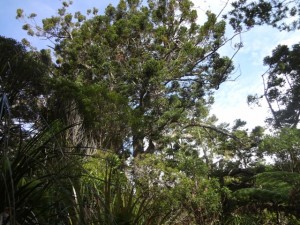 As you skirt around the head of the valley, you get constant views of enormous kauri rising up out of the understorey. My photographs do not do justice, one of the hardest things is photographing in the bush where it is dark, but the camera seems to recruit light and does not capture what it is really like. It would take a Ted Scott to do justice.
As you skirt around the head of the valley, you get constant views of enormous kauri rising up out of the understorey. My photographs do not do justice, one of the hardest things is photographing in the bush where it is dark, but the camera seems to recruit light and does not capture what it is really like. It would take a Ted Scott to do justice.
After quite a long period of mature forest we came crossed a couple of streams running across rock faces, with heaps of parataniwha. One of the rock faces had two square notches and I suspect at some point this held a dam, which may have contributed to the power of the Glen Esk Dam when it was tripped. Bushmen often did sequential tripping to drive the logs along.
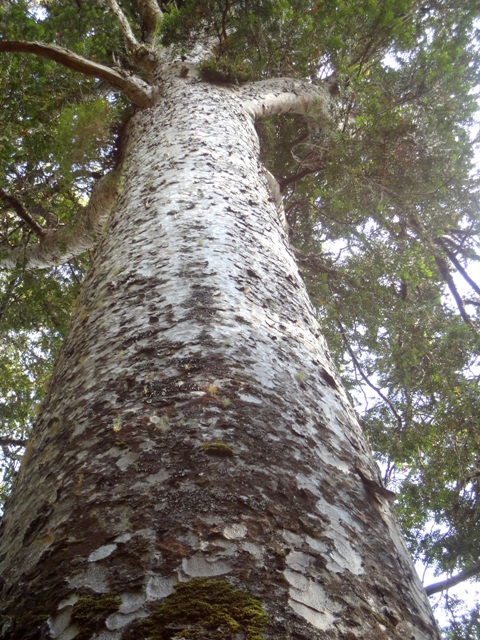 Following this the bush changed and was kanuka dominated, probably regenerating farmland and we were often near the now wider stream. We were in the area where Dr William Stockwell purchased land in the 1860s and settled the Ness family and his stepsons, Charles and Peter Cowan. For much of this walk we were parallel to the William Stockwell Stream. The Cowans and Nesses had a house and called this area “the farm”, though they were really interested in kauri timber milling. In the 187os they moved down to Piha proper, in the area of the Domain.
Following this the bush changed and was kanuka dominated, probably regenerating farmland and we were often near the now wider stream. We were in the area where Dr William Stockwell purchased land in the 1860s and settled the Ness family and his stepsons, Charles and Peter Cowan. For much of this walk we were parallel to the William Stockwell Stream. The Cowans and Nesses had a house and called this area “the farm”, though they were really interested in kauri timber milling. In the 187os they moved down to Piha proper, in the area of the Domain.
Evetually we reached a track junction with the closed off other end of the Lucy Cranwell. We could have kept going downwards on the Kauri Grove Track and reached the top of the Kitekite Falls, but instead we went southwards, up the Winstone Track, which looked as if they were building a highway, with new track clearing and heaps and heaps of bags of gravel. A final small leg on the Ussher Track took us to Piha Road. One of the party, the fittest member, had shot back up to where the car was parked and picked us up for the ride back to Piha where a very cold bottle of bubbly was waiting.
Highly recommended, but do observe the boot scrubbing and spraying. This is an area where the kauri must be hundreds and hundreds of years old and they need looking after.



